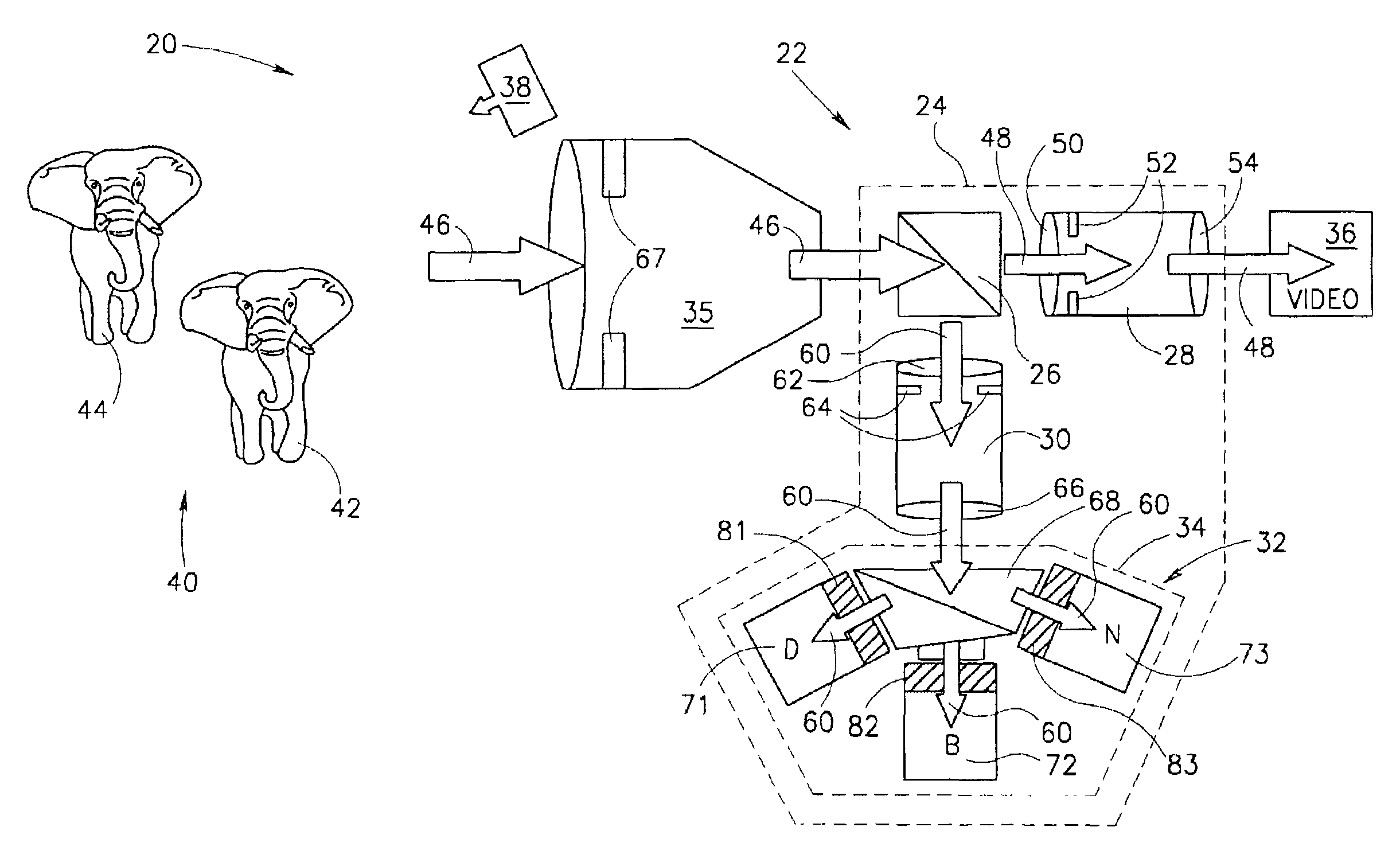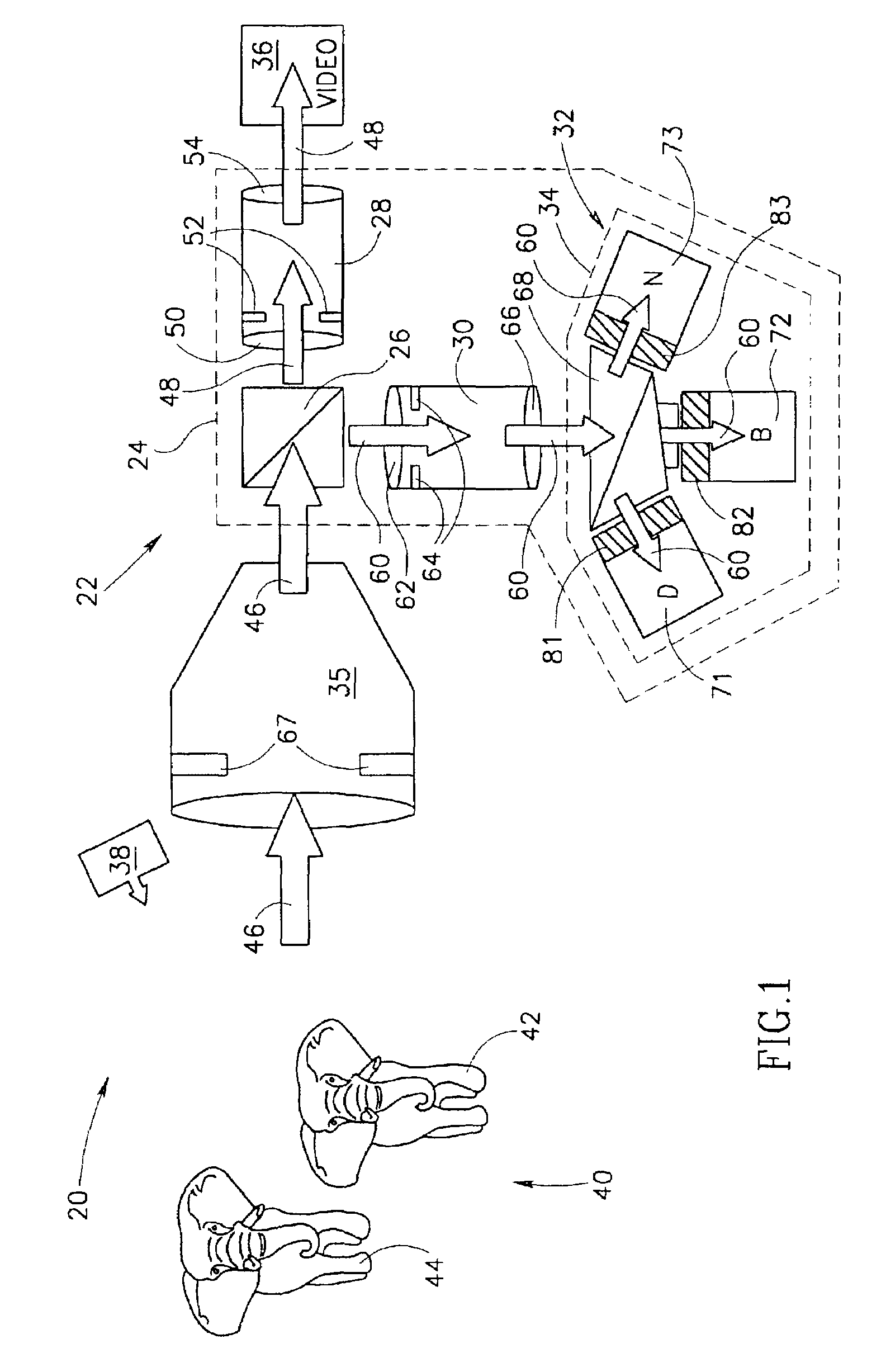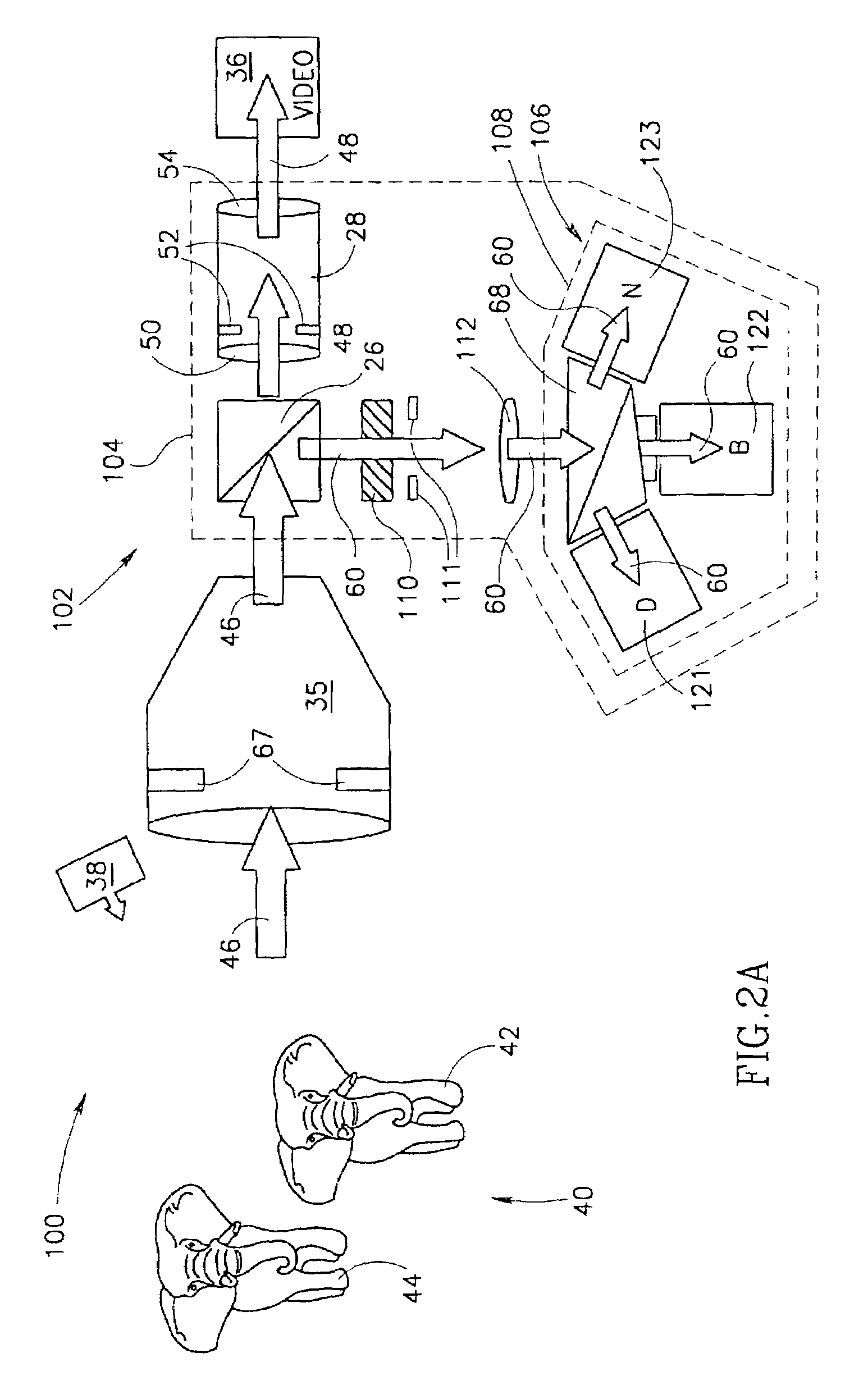3D imaging system
a 3d imaging and image technology, applied in the field of cameras, can solve the problems of long turn-on and turn-off times of these photosurfaces, and achieve the effect of simplifying construction and control
- Summary
- Abstract
- Description
- Claims
- Application Information
AI Technical Summary
Benefits of technology
Problems solved by technology
Method used
Image
Examples
Embodiment Construction
[0051]FIG. 1 schematically shows a 3D imager 20 comprising a 3D module 22, in accordance with a preferred embodiment of the present invention, shown inside dashed boundary 24. 3D module 22 comprises a beam splitter 26, two refocusing lens system 28 and 30, referred to as “refocusers”28 and 30, and a 3D camera 32 having components shown inside a dashed boundary 34. 3D module 22 is coupled to a taking lens system 35 and an imaging camera 36, which is shown by way of example as a video camera. Preferably, video camera 36 is a color video camera. Taking lens 35 and video camera 36 may be any suitable taking lens and video camera, for example a CCD or CMOS camera, readily available on the commercial market. A pulsed light source 38 radiates pulse trains of, preferably IR light pulses, to illuminate scenes being imaged with 3D imager 20. 3D imager 20 is shown, by way of example, imaging a scene 40 having two elephants 42 and 44.
[0052]Visual light and IR light from IR source 38 that is ref...
PUM
 Login to View More
Login to View More Abstract
Description
Claims
Application Information
 Login to View More
Login to View More - R&D
- Intellectual Property
- Life Sciences
- Materials
- Tech Scout
- Unparalleled Data Quality
- Higher Quality Content
- 60% Fewer Hallucinations
Browse by: Latest US Patents, China's latest patents, Technical Efficacy Thesaurus, Application Domain, Technology Topic, Popular Technical Reports.
© 2025 PatSnap. All rights reserved.Legal|Privacy policy|Modern Slavery Act Transparency Statement|Sitemap|About US| Contact US: help@patsnap.com



